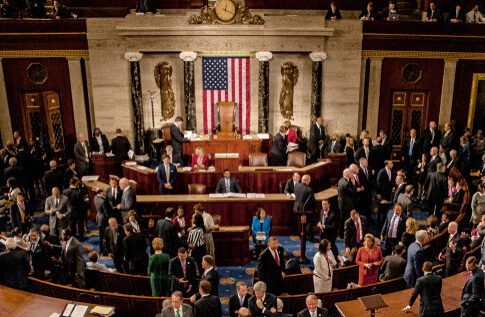House Speaker Mike Johnson sets his sights on an ambitious sweeping bill that aims to address border security, domestic energy production, tax reforms, spending cuts, and a debt ceiling increase. However, Johnson’s push faces significant hurdles in a divided Congress. How will Senate Republicans respond to the House’s ambitious timeline?
Johnson’s Ambitious Agenda Faces Congressional Hurdles
Speaker Mike Johnson, buoyed by President-elect Donald Trump’s support, has set an April target for passing a wide-ranging legislative package. This ambitious timeline reflects the urgency of implementing Trump’s agenda before the next election cycle heats up.
However, the narrow Republican majority in the House presents a significant challenge. With no expected Democratic support, Johnson must navigate internal party divisions to secure passage.
NEW: Mike Johnson eyes April deadline to pass one big MAGA bill through the House, but GOP senators are skeptical https://t.co/KQQ8nkCsr9
— Sahil Kapur (@sahilkapur) January 15, 2025
Senate Skepticism and Alternative Approaches
Senate Republicans have expressed skepticism about the feasibility of passing such a comprehensive bill quickly. Senate Majority Leader John Thune has suggested breaking the agenda into two separate bills, focusing on border security and tax reforms separately.
This approach, supported by several key senators, aims to navigate the complex Senate rules more effectively. Senator Kevin Cramer proposed a dual-track strategy, with the House pursuing a comprehensive bill while the Senate works on a smaller, border-focused measure.
TRENDING: Listen to what Speaker Mike Johnson said, “We told all House and Senate Republicans, be ready to work overtime. We are going to pass Trump’s agenda. It’s going to be a rough season, hopefully wrapping up by the end of April at the latest.” pic.twitter.com/csqmSSv68d
— Resist the Mainstream (@ResisttheMS) January 7, 2025
Balancing Act: Fiscal Responsibility and Political Realities
The proposed package includes controversial elements like expanding the SALT deduction to gain support from affected states. This move highlights the delicate balance Johnson must strike between fiscal conservatism and political pragmatism.
Critics argue that the April deadline is overly ambitious, given the complexities of the Senate budget process. Jon Traub from Deloitte Tax LLP noted the challenges of adopting comprehensive policies through reconciliation, further complicating the legislative path forward.
Sources:
- Trump brings Congress to a halt with new demands on spending as shutdown looms | Politics | wrex.com

